Adata XPG SX8200 Pro Review: Go Pro on a Budget (2TB Update)
Why you can trust Tom's Hardware
Adata XPG SX8200 Pro (512GB)
Pros:
- Class-leading performance
- Class-leading power efficiency
- Black PCB w/ stylish DIY heat spreader
- Software package included
Cons:
- Same endurance as the non-Pro model
Verdict:
Adata’s XPG SX8200 Pro offers purchasers an incredible value that both looks and performs great. The competitive pricing that undercutting Samsung’s and WD’s is just icing on the cake. With performance that trades blow with Samsung’s 970 EVO Plus, power efficiency that outclasses almost any competitor, and plenty of endurance, the SX8200 Pro is a top value pick for those wanting one of the best SSDs out.
Comparison Products
Adata’s XPG SX8200 Pro is a high-performance SSD. As such, we pit it against Samsung’s 970 EVO Plus. Featuring an in-house Phoenix controller and 9xL NAND flash, it is one of the fastest NVMe SSDs available. We also added in MyDigitalSSD’s BPX Pro, which features a Phison E12 controller and 64L Toshiba BiCS3 TLC NAND flash, which is a direct competitor to the SX8200 Pro.
We also included some cheaper alternatives, like the Crucial P1, which boasts a Silicon Motion SM2263 controller and Micron’s 64L QLC NAND flash, and WD’s highly-efficient Blue SN500, which features an in-house controller and Toshiba’s 64L BiCS3 NAND flash. Additionally, we include the Crucial MX500, a SATA SSD, for comparison’s sake as well, as Intel’s Optane 905P, the most expensive consumer SSD available.
Game Scene Loading - Final Fantasy XIV
The Final Fantasy XIV StormBlood benchmark is a free real-world game benchmark that easily and accurately compares game load times without the inaccuracy of using a stopwatch.
Get Tom's Hardware's best news and in-depth reviews, straight to your inbox.
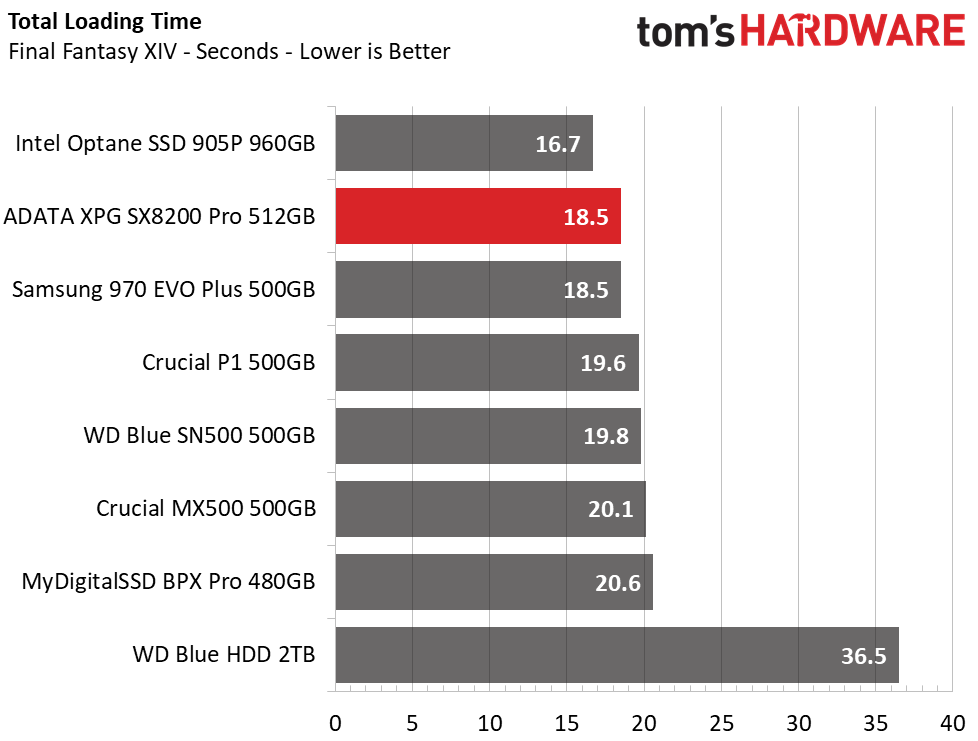
Adata’s XPG SX8200 Pro delivers very fast game load times. It basically ties the Samsung 970 EVO Plus for second place In Final Fantasy XIV and is just two seconds slower than the Intel Optane 905P. Compared to the HDD, the performance is nearly twice as fast.
Transfer Rates – DiskBench
We use the DiskBench storage benchmarking tool to test file transfer performance with our own custom 50GB block of data. Our data set includes 31,227 files of various types, like pictures, PDFs, and videos. We copy the files to a new folder and then follow up with a reading test of a newly-written 6 GB file.
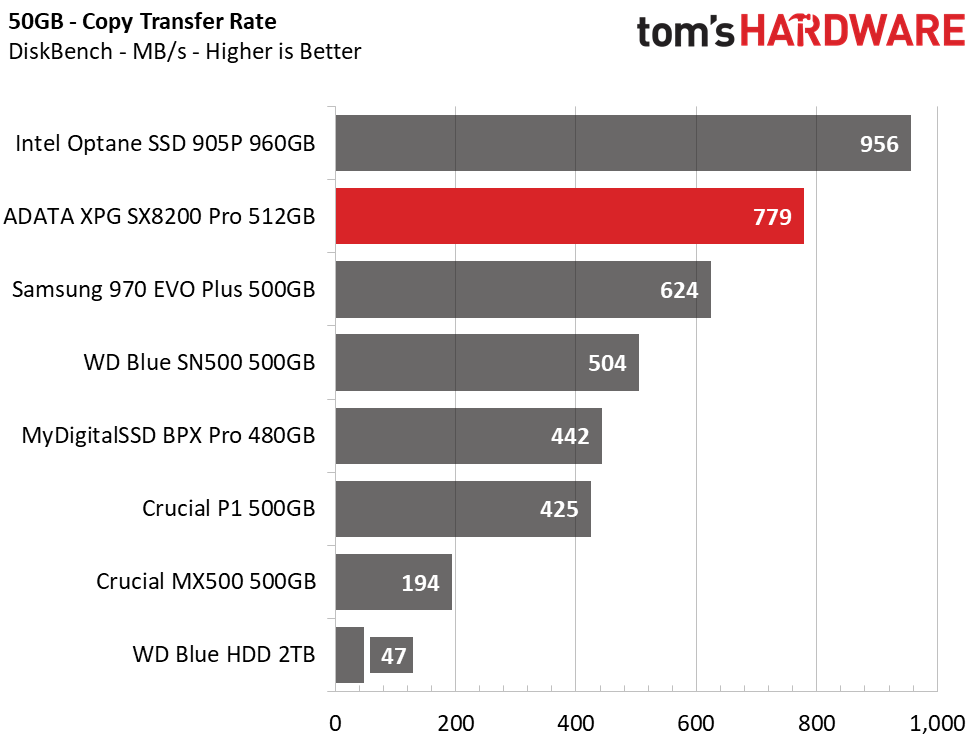
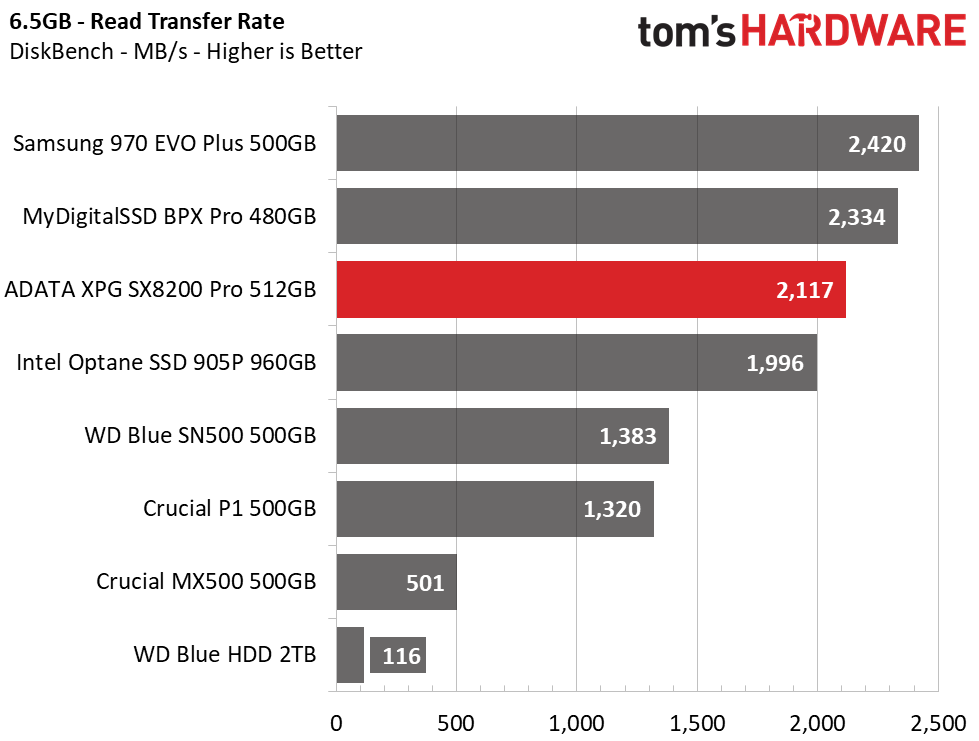
The SX8200 Pro delivers significantly better performance than the other entry-level SSDs in our test pool. Again, the SX8200 Pro achieves second place overall, but this time the gap between it and the Samsung is much larger. With an average speed of 779MB/s, it is the fastest result we have seen from a 500GB NAND-based SSD. But both the 970 EVO Plus and BPX Pro took the lead by a few hundred MB/s while reading back our 6.5GB test file.
Trace Testing – PCMark 8 Storage Test 2.0
PCMark 8 is a trace-based benchmark that uses Microsoft Office, Adobe Creative Suite, World of Warcraft, and Battlefield 3 to measure the performance of storage devices in real-world scenarios.

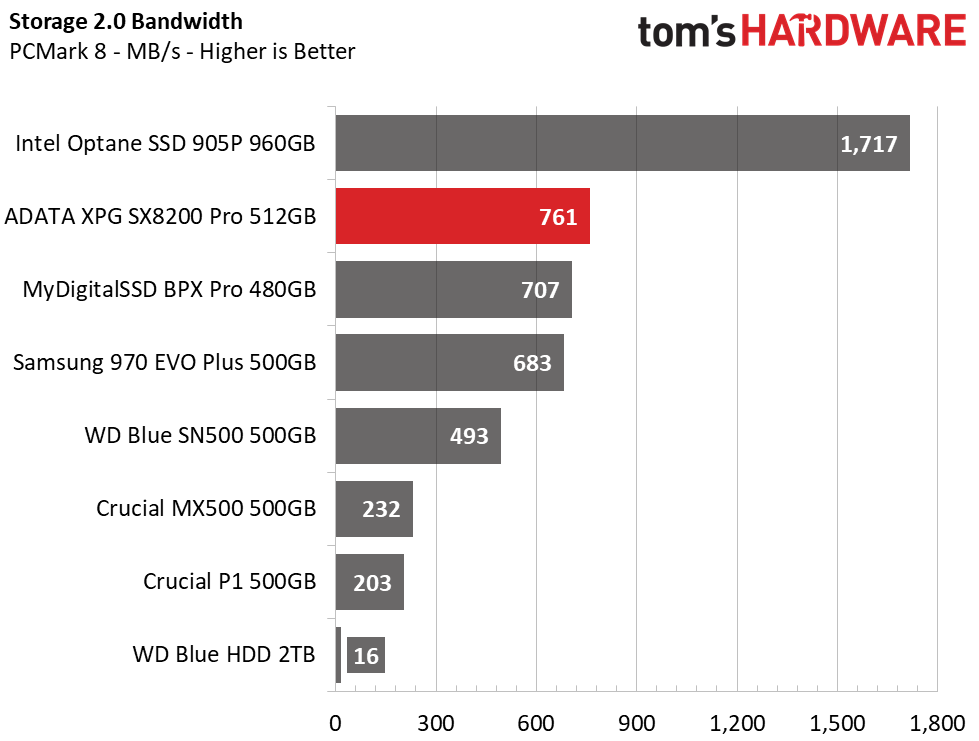
With a score of 5,108 points and an average bandwidth of 761MB/s, the SX8200 Pro takes second place in PCMark 8. It delivers significantly higher throughput than any SATA based SSD and absolutely leaves any HDD in the dust. Samsung’s 970 EVO Plus and MyDigitalSSD’s BPX Pro both do well here, too, but the SX8200 Pro’s faster response times at low queue depths (QD) help it power through PCMark 8’s consumer-based application traces faster than the rest.
SYSmark 2014 SE
Like PCMark, SYSmark uses real applications to measure system performance. SYSmark takes things much further, however. It utilizes fourteen different applications to run real workloads with real data sets to measure how overall system performance impacts the user experience. BAPCo's SYSmark 2014 SE installs a full suite of applications for its tests, which include Microsoft Office, Google Chrome, Corel WinZip, several Adobe software applications, and GIMP. That also makes it a great test to measure the amount of time it takes to install widely-used programs after you install a fresh operating system.

Samsung’s 970 EVO Plus took the lead for second place, but ADATA’s XPG SX8200 Pro still scored very well. It offers a slight performance boost over the entry-level devices in our pool and delivers a significantly better user experience than an HDD. With a responsiveness result of 1712 points, it attains third place overall.
Trace Testing – SPECworkstation 3
Like PCMark 8, SPECworkstation 3 is a trace-based benchmark, but it is designed to push the system harder by measuring workstation performance in professional applications. The full suite consists of more than 30 workloads, but we've opted only to run the storage benchmark, which uses only 15 of them and categorizes the results into five market segments for scoring: Media & Entertainment, Product Development, Life Sciences, Energy, and General Operations.
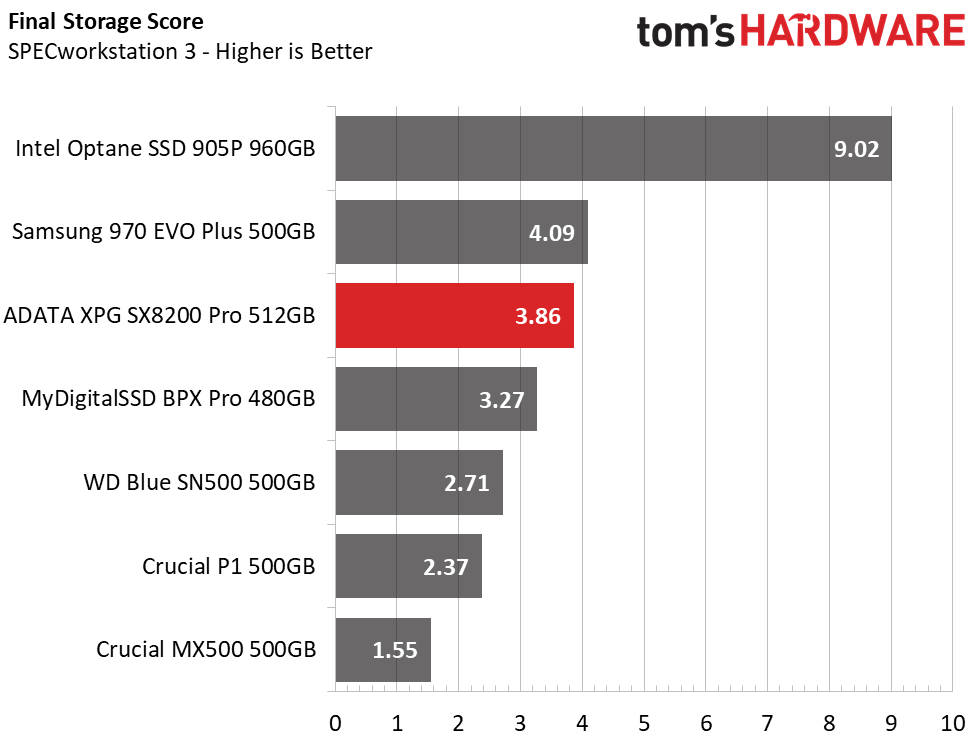
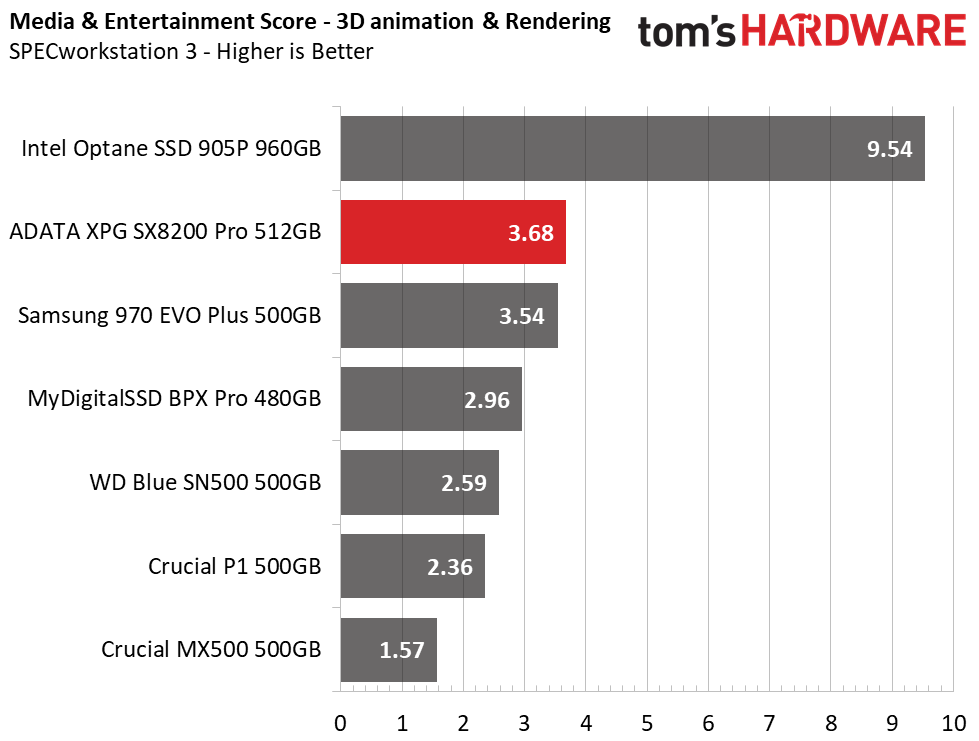

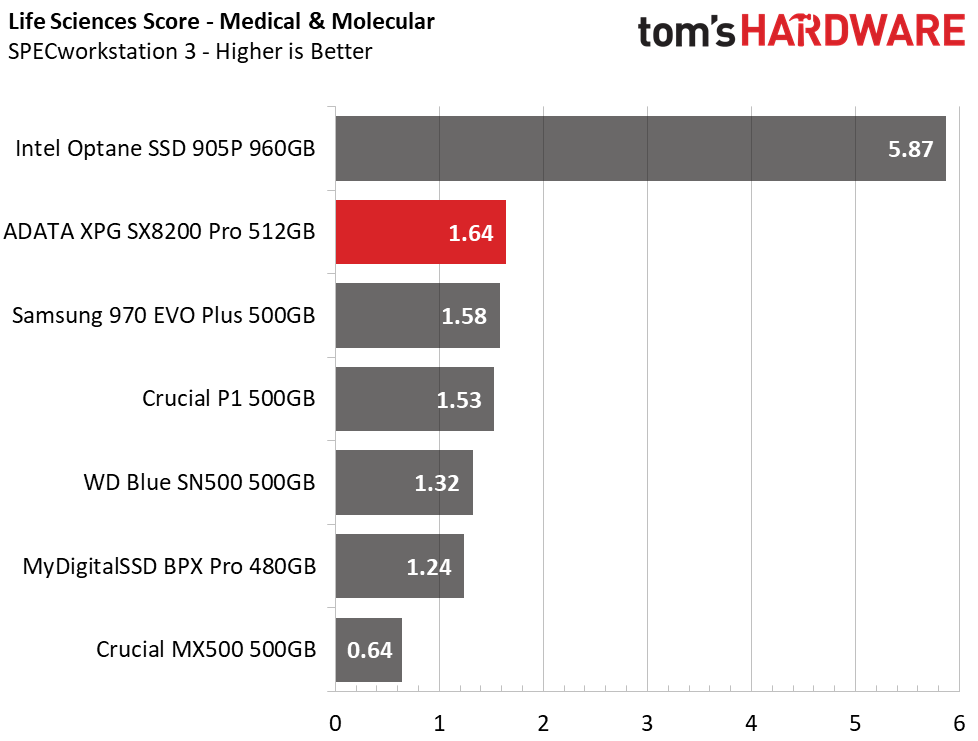
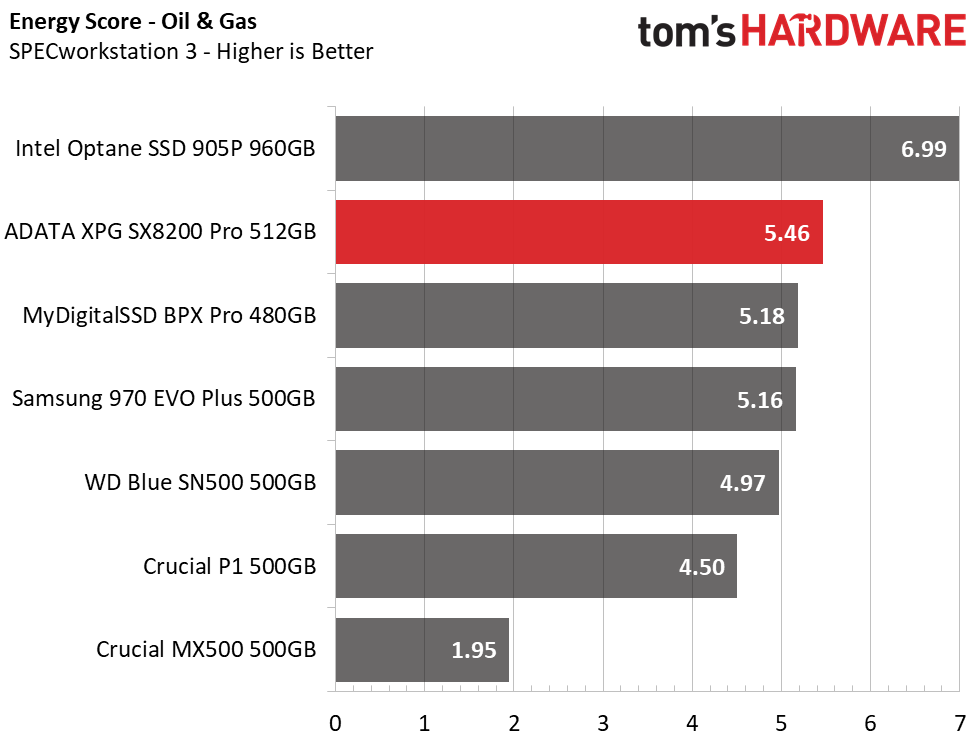
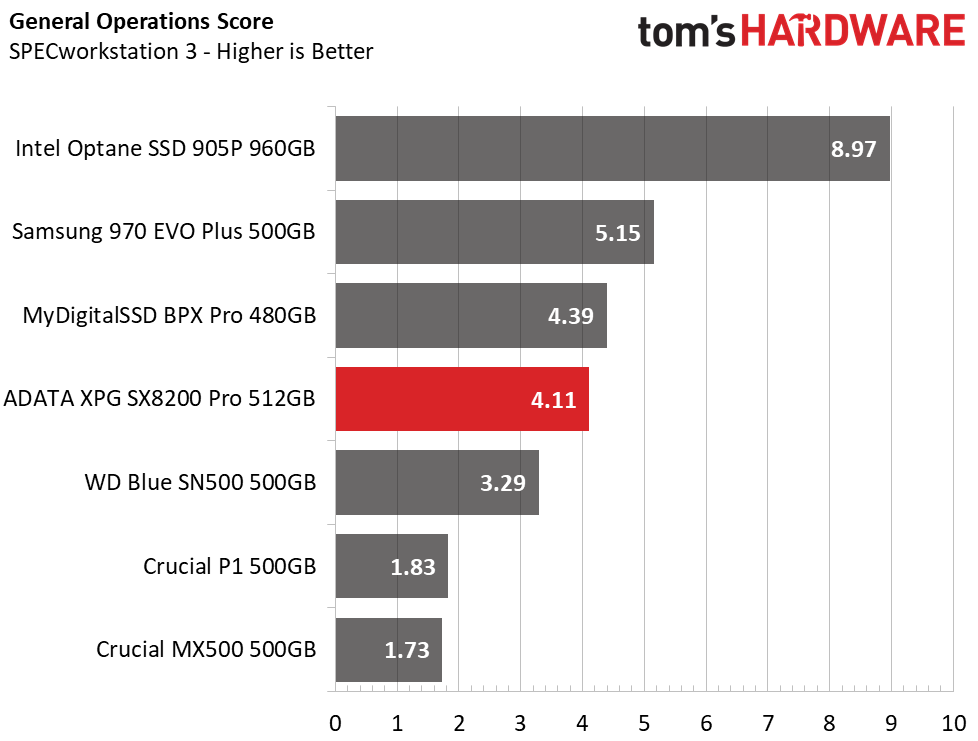
With its ultra-low latency, Intel’s Optane 905P powers through SPECworkstation 3’s storage test faster than any flash-based SSD. If you need fast, consistent performance for your workstation applications, Optane is the way to go. Flash is still a viable option, though. The SX8200 Pro scores just behind Samsung once again and takes third place. While the Samsung 970 EVO is a better option in heavier workstation workloads, the SX8200 Pro still offers decent performance for the dollar.
Synthetics - ATTO
ATTO is a simple and free application that SSD vendors commonly use to assign sequential performance specifications to their products. It also gives us insight into how the device handles different file sizes.
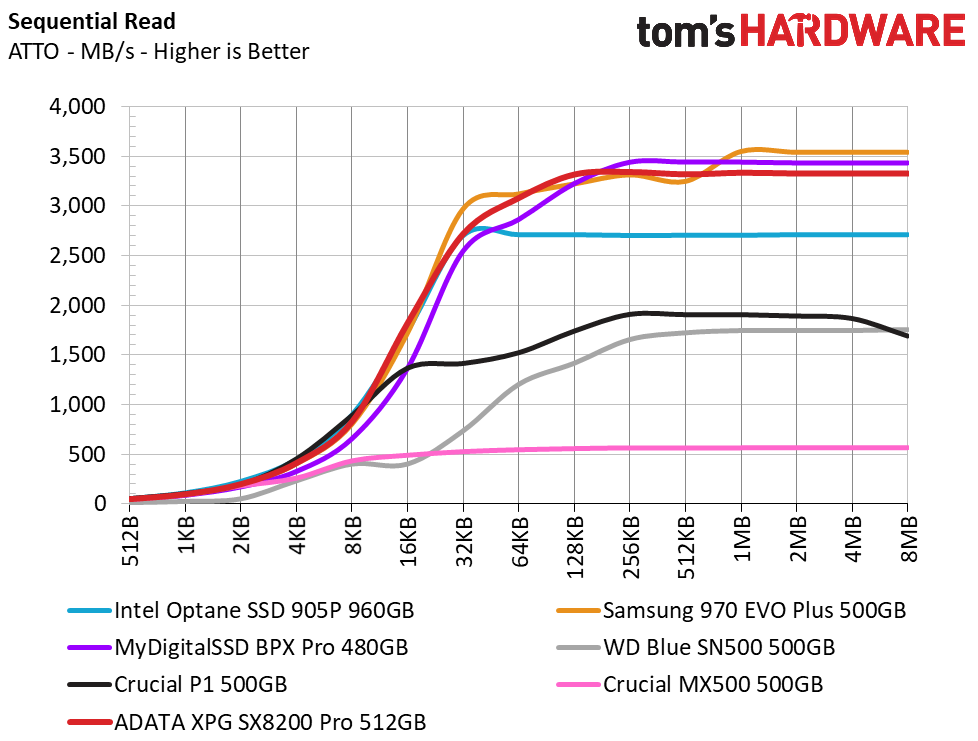
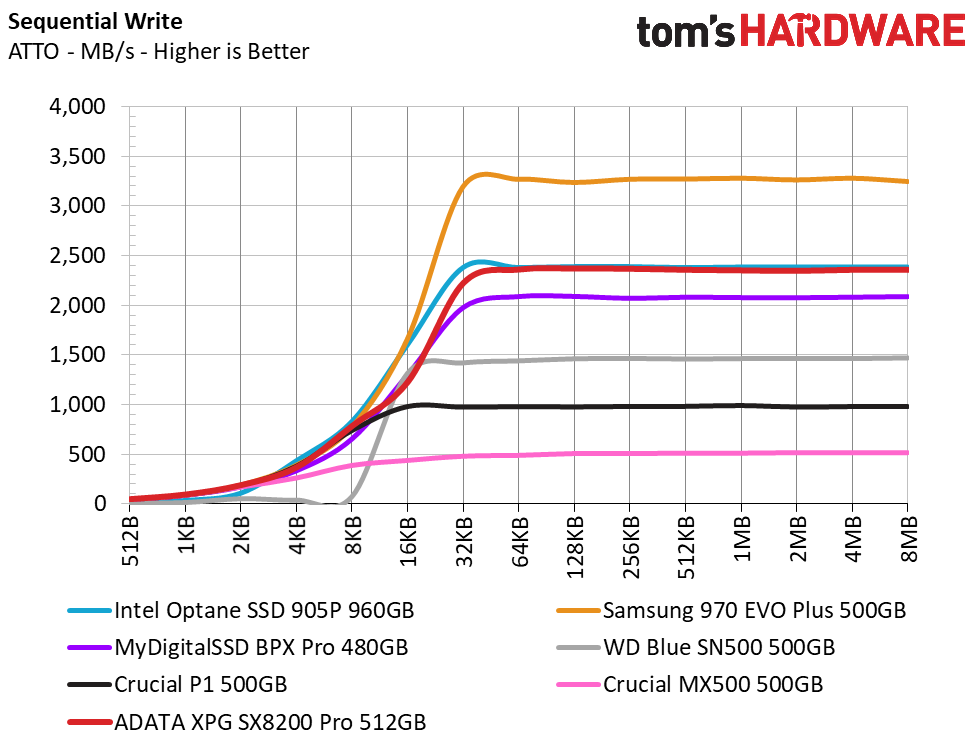
Adata’s XPG SX8200 Pro scores well in ATTO. Performance ramps up nicely as the block size increases, just like we see with the other high-end competitors. Overall, this benchmark reports a max read throughput of 3.35GB/s and a max write throughput of 2.35GB/s, just as Adata rates it for.
Synthetics - iometer
iometer is an advanced and highly configurable storage benchmarking tool that vendors often use to measure the performance of their devices.
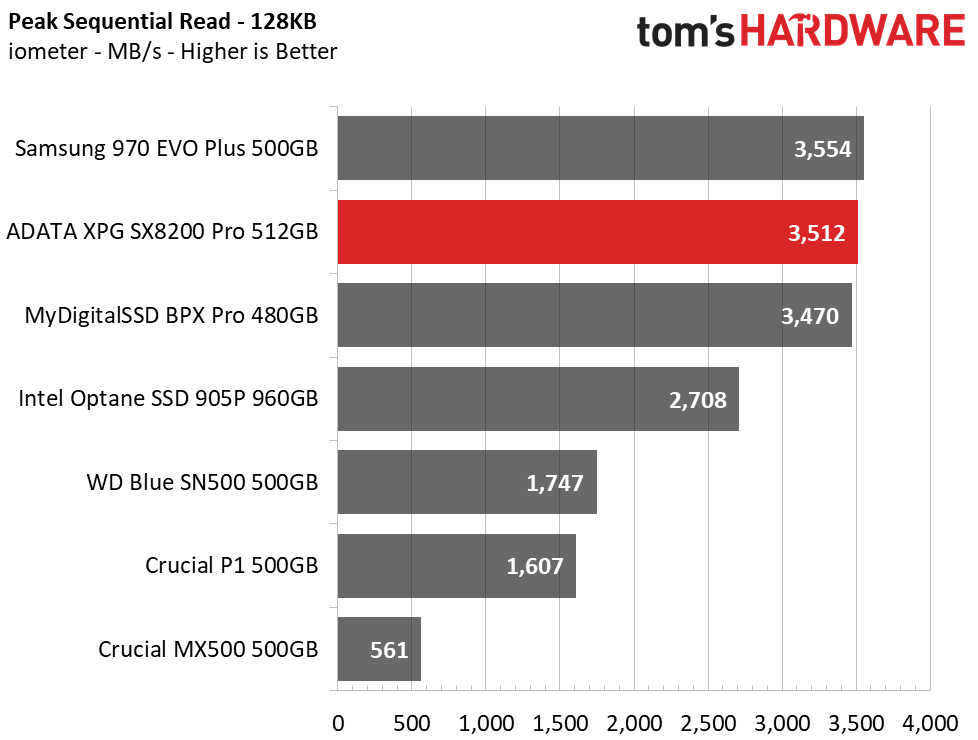
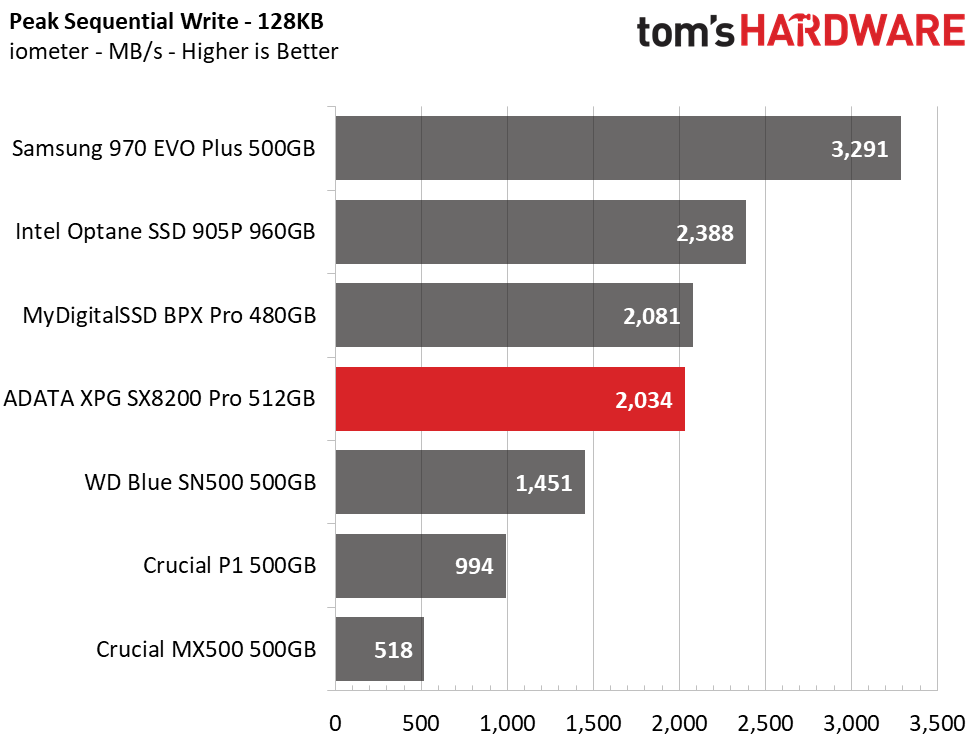

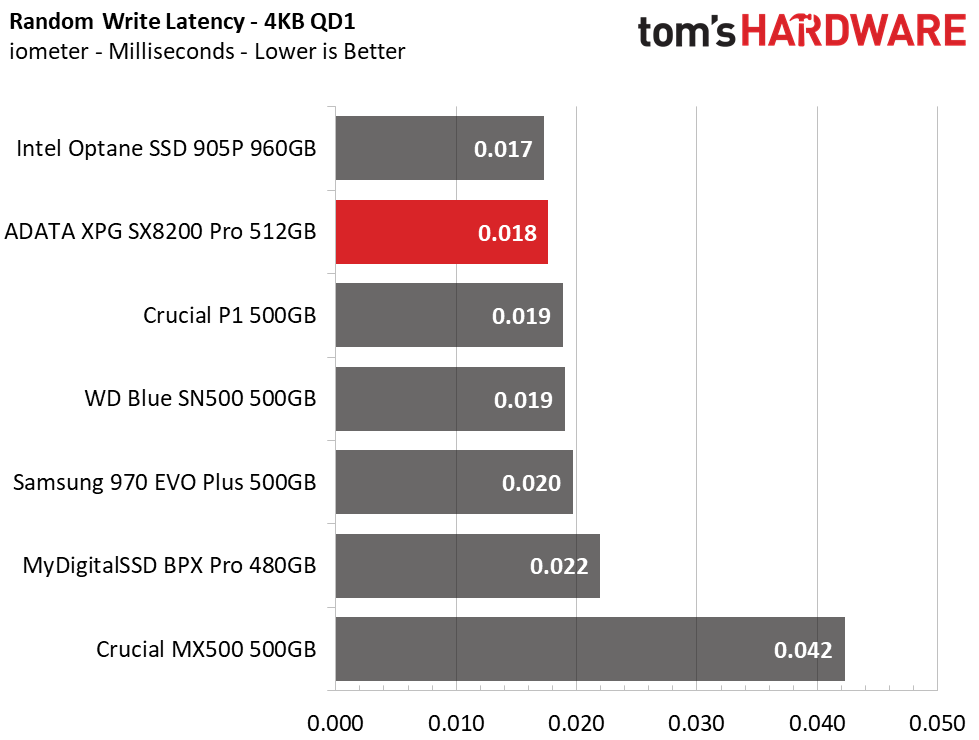
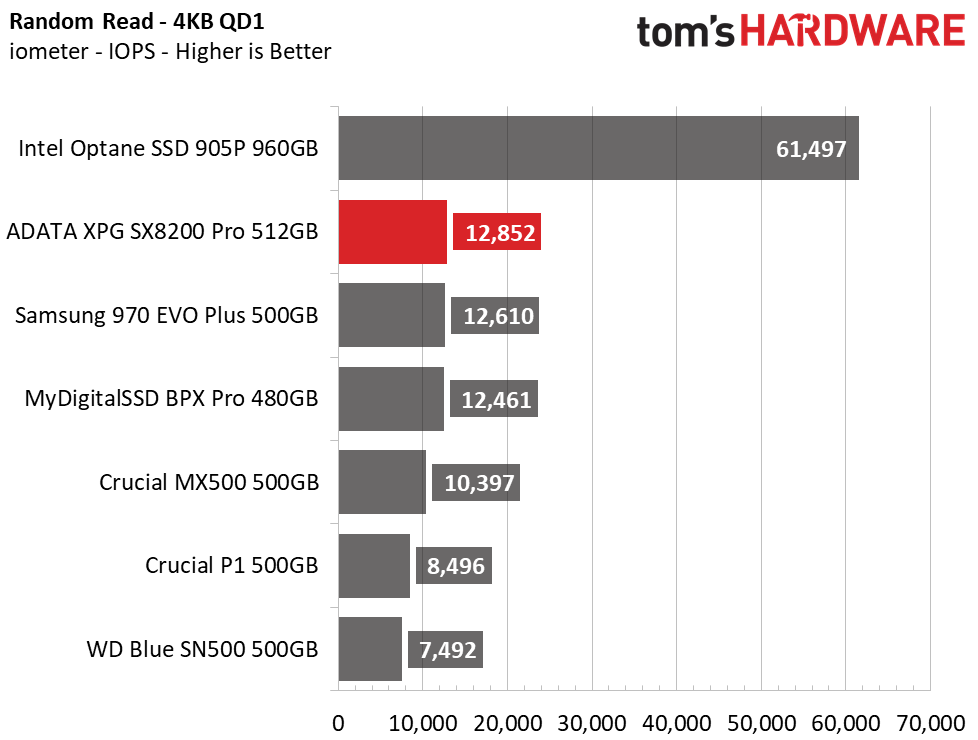
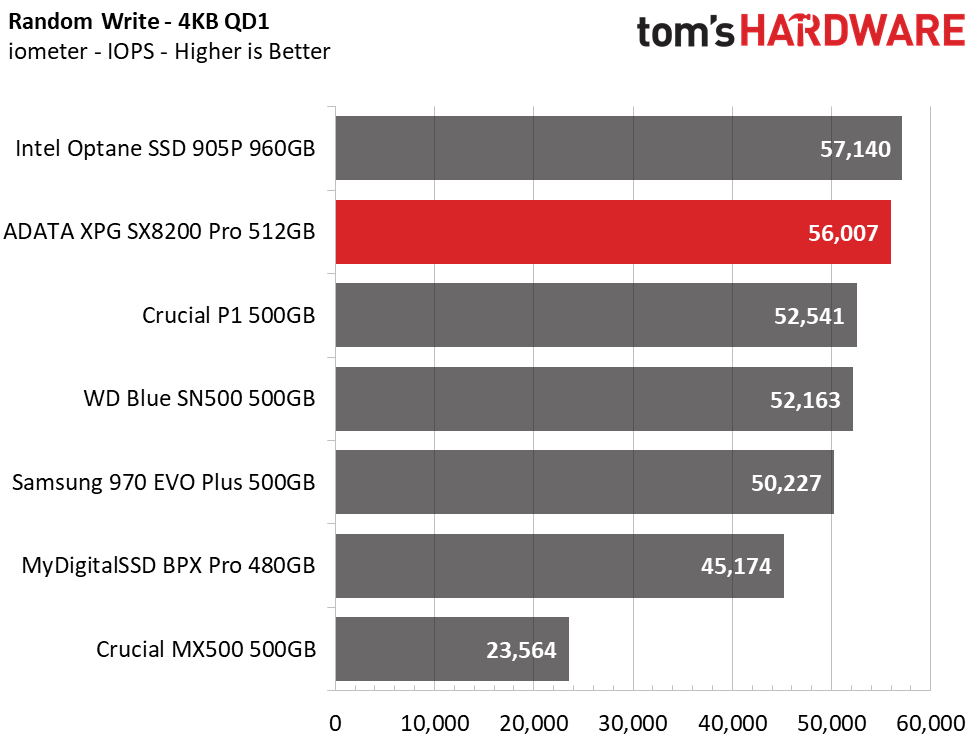

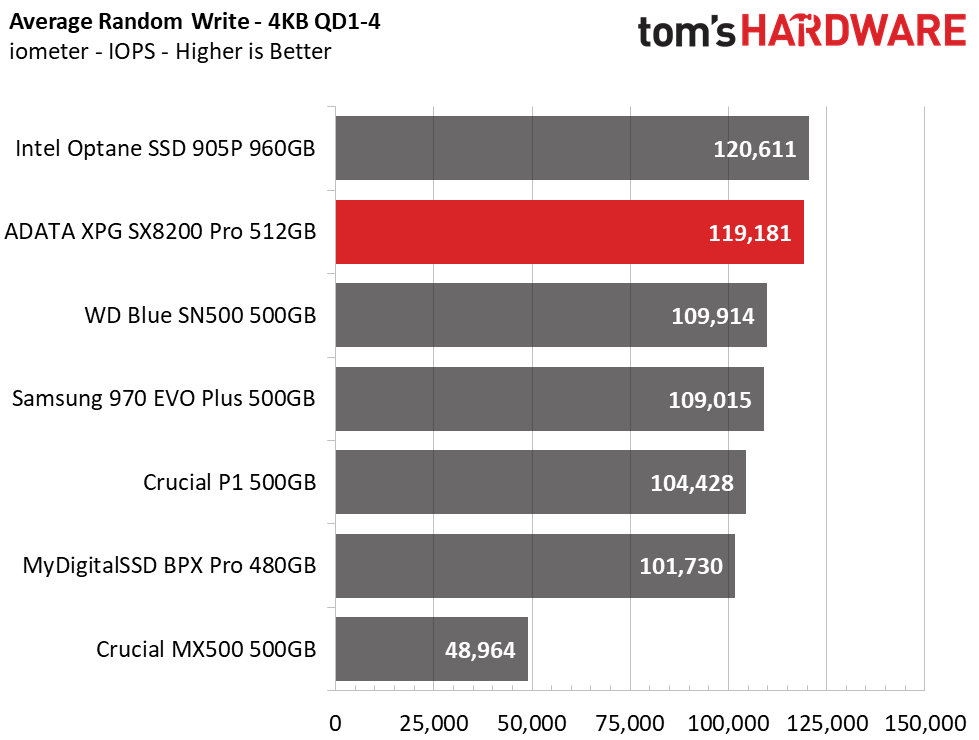

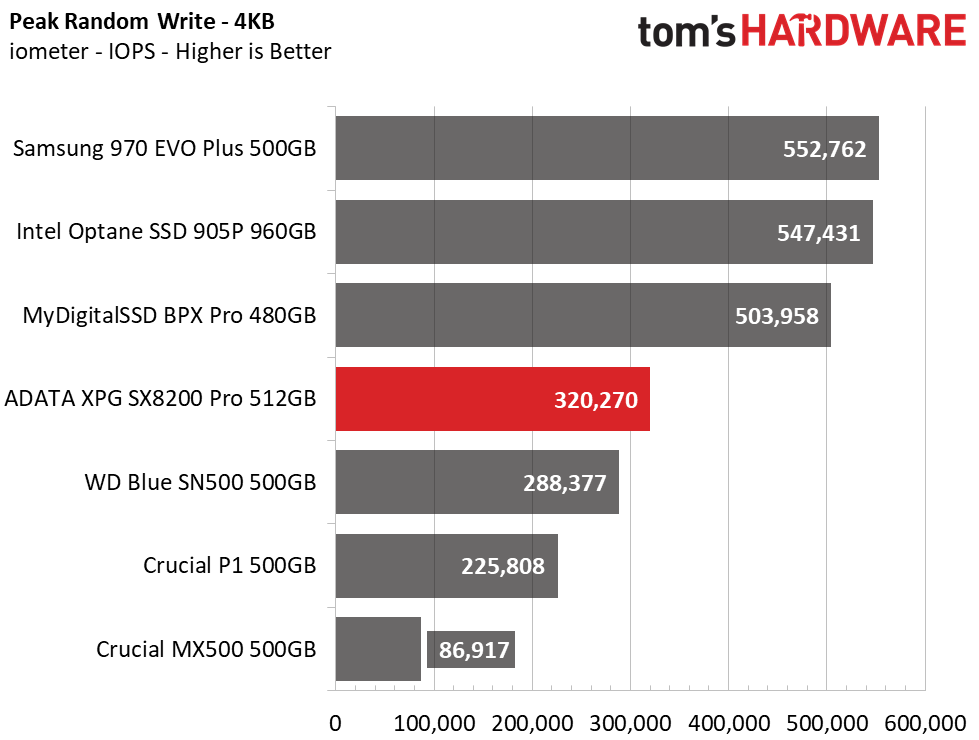
Peak read performance comes in at 3.5GB/s, landing the SX8200 Pro second place on our read chart. Write performance is a bit lower, however. With sequential write speeds maxing out at 2GB/s, it is very close to Phison E12-powered SSDs and ranks fourth overall.
SX8200's random performance is very good. Overall, the SX8200 Pro comes in second to the Intel Optane 905P for this metric. Even averaging QDs 1-4, it outscores the Samsung 970 EVO other competitors. In terms of max random IOPS, a metric that doesn’t matter for any consumer workload, the MyDigitalSSD BPX Pro and Samsung take the lead.
Sustained Sequential Write Performance
Official write specifications are only part of the performance picture. Most SSD makers implement a pseudo-SLC cache buffer, which is a fast area of pSLC-programmed flash that absorbs incoming data. Sustained write speeds can suffer tremendously once the workload spills outside of the pSLC cache and into the "native" TLC or QLC flash. We use iometer to hammer the SSD with sequential writes for 15 minutes to measure both the size of the pSLC buffer and performance after the buffer is saturated.
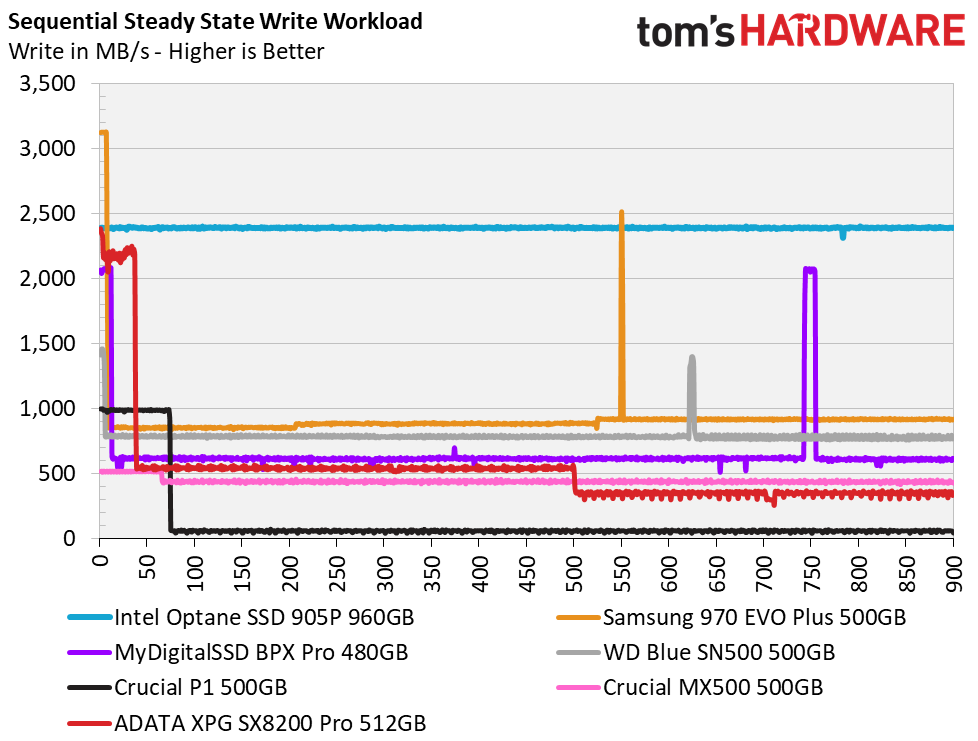
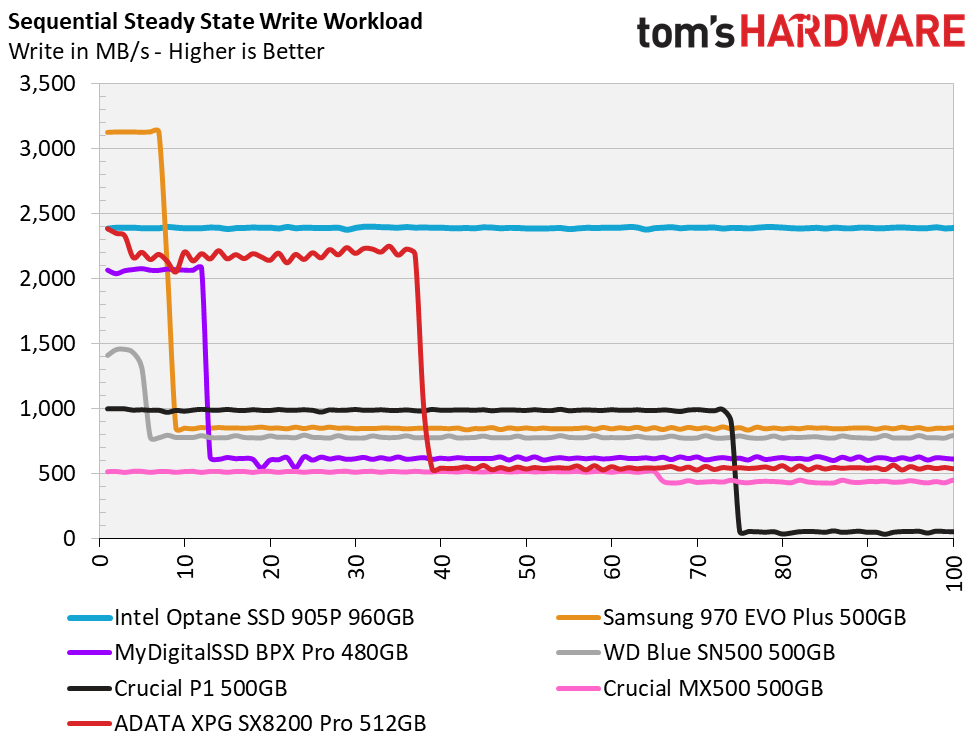
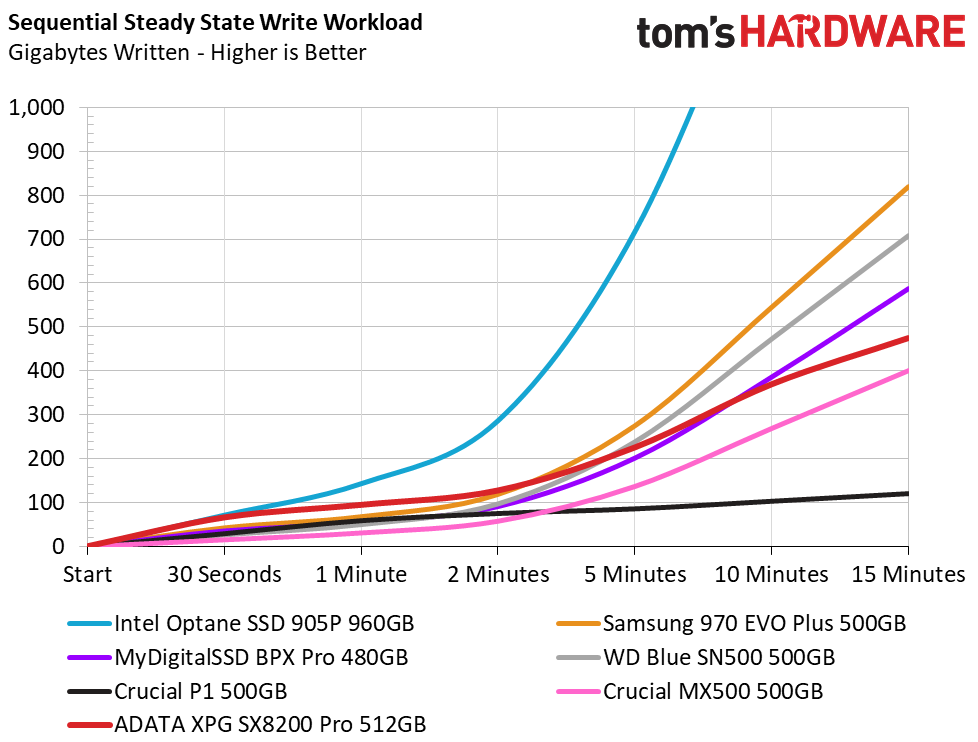
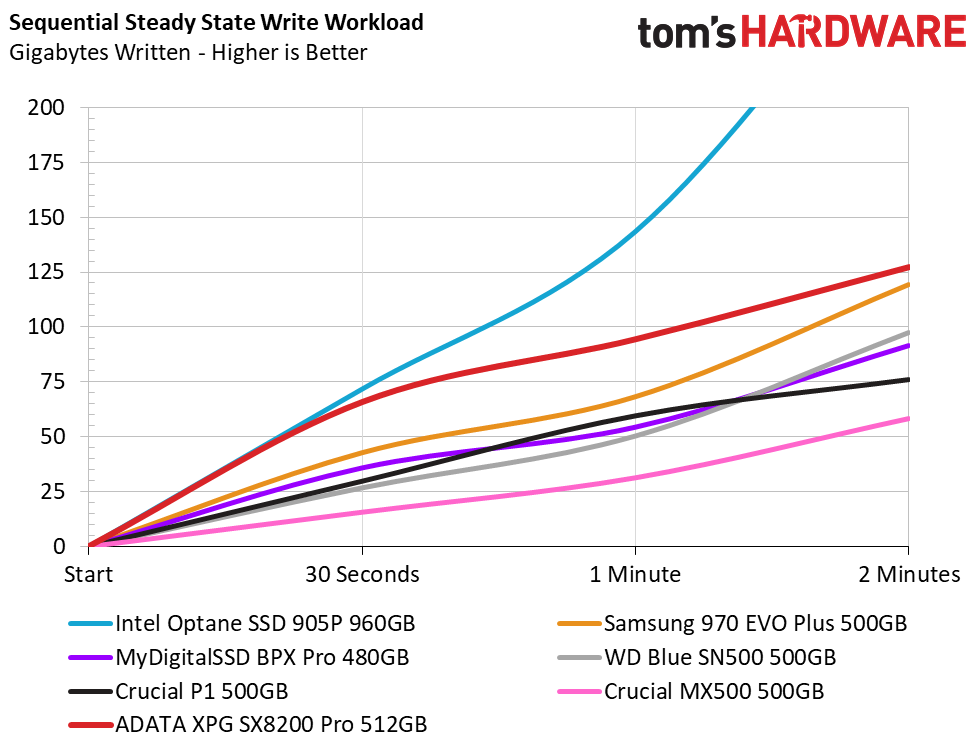
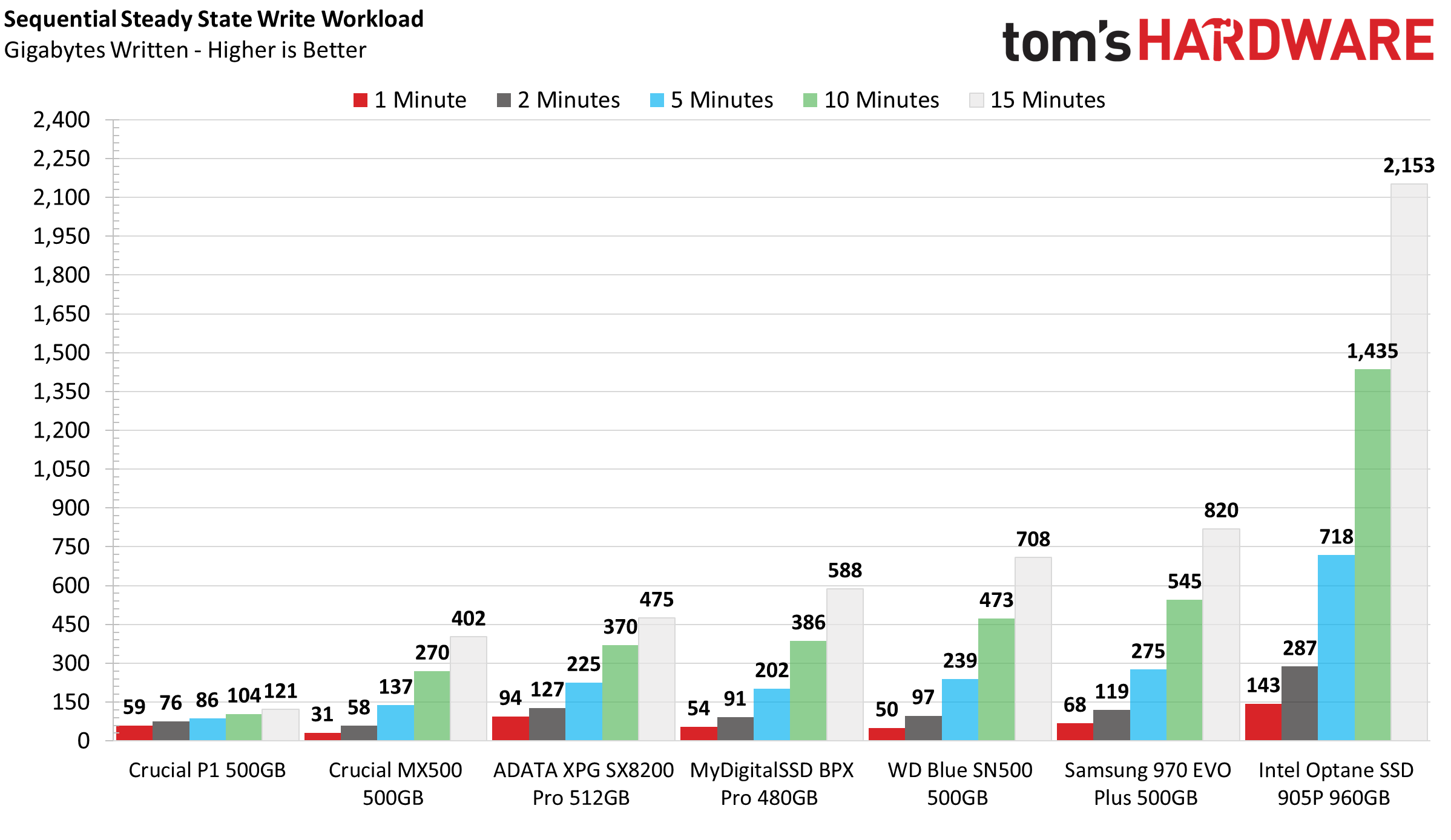
The 512GB SX8200 Pro has a smaller pSLC cache than the 1TB model, but even so, it is rather large. After continuously writing 82GB, the write performance degraded to 550MB/s. After writing just over 250GB more data, the drives' write speed degraded once more to a base speed of 350MB/s. Its base write performance isn’t the fastest, and this can cause some inconsistency under heavy workloads if you don’t give it enough idle time to recover. But it is more than enough for most consumer applications, which are predominately bursty and transfer just a few hundred MB to a few GB of data at once.
Power Consumption
We use the Quarch HD Programmable Power Module to gain a deeper understanding of power characteristics. Idle power consumption is a very important aspect to consider, especially if you're looking for a new drive for your laptop. Some SSDs can consume watts of power at idle while better-suited ones sip just milliwatts. Average workload power consumption and max consumption are two other aspects of power consumption, but performance-per-watt is more important. A drive might consume more power during any given workload, but accomplishing a task faster allows the drive to drop into an idle state faster, which ultimately saves power.

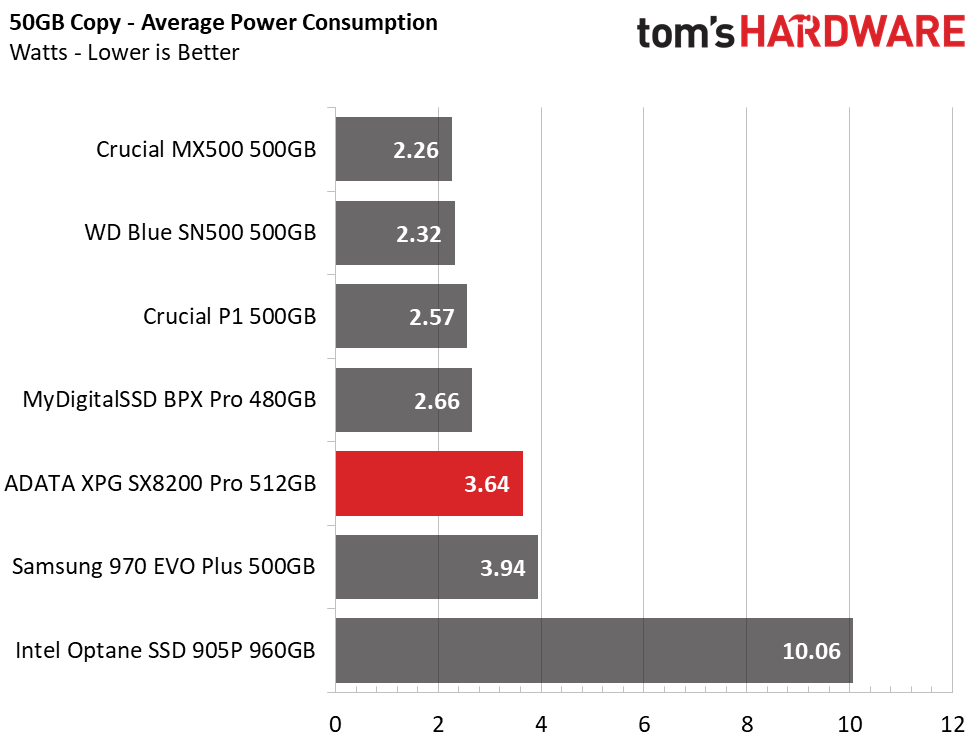
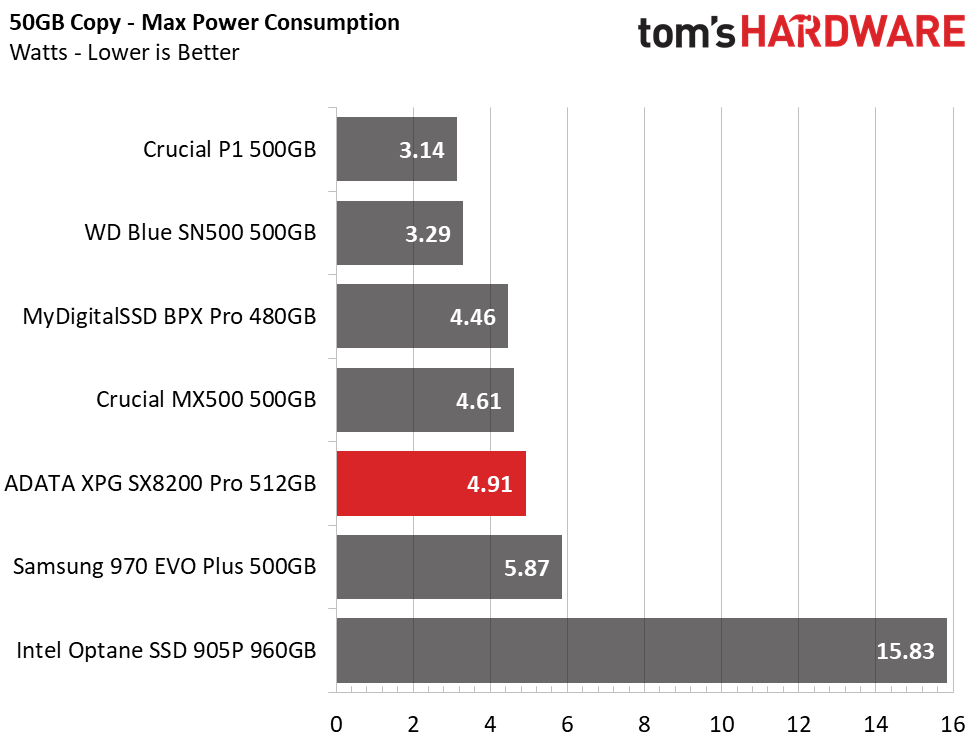

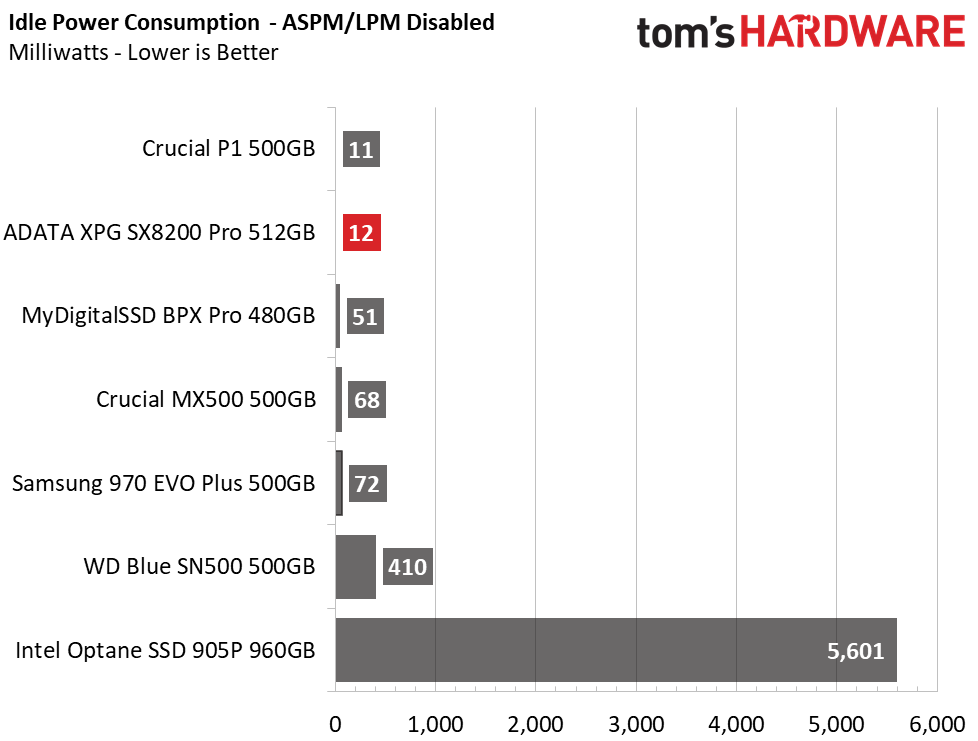
Adata’s XPG SX8200 Pro scores second in power efficiency, just behind the WD Blue SN500. While the WD Blue is more efficient, it cannot touch the performance level of the SX8200 Pro, which is to be expected. The SX8200 Pro also consumes significantly less power than the Samsung 970 EVO Plus, which is a big plus. At idle, if you don’t enable ASPM in your UEFI, it may be a little thirsty with an average consumption of 714mW. But, once we enable ASPM, it drops down into a lower power state and consumes just 12mW.
MORE: Best SSDs
MORE: How We Test HDDs And SSDs
MORE: All SSD Content
Current page: 512GB Performance Results
Prev Page A Samsung Killer Next Page 1TB Performance Results
Sean is a Contributing Editor at Tom’s Hardware US, covering storage hardware.
-
popatim Did you run into any issues witht he drive being detected on restarts like several forum users reported?Reply -
Khadijahp Though an limited edition, for comparision purposes the Intel's Ryzen killer Core i9 9900KS should had been included, instead of, or beyond the overclocked 9900K.Reply -
Mezoxin Reply
had the drive for quite a while on my system as my main drive never experienced such issuespopatim said:Did you run into any issues witht he drive being detected on restarts like several forum users reported? -
Mezoxin Reply
yes this is an old review from feburary-april i think , it got somehow reposted , i know this because i read this review before buying minemac_angel said:I thought you did a review of this drive a long time ago. -
Gillerer "Pro" is just a word. You can't draw conclusions from Samsung's use of it to mean "MLC" / "more consistent performance", and apply it to other manufacturers. (You could just as well draw conclusions from AMD's past use of it to mean "partially disabled silicon".)Reply
This simply has an updated controller and firmware compared to the original SX8200, so different - but not necessarily better in all cases - performance characteristics. It's not a different class of product to SX8200 (non-Pro), but rather a later revision that replaces it. -
AlistairAB Replypopatim said:Did you run into any issues witht he drive being detected on restarts like several forum users reported?
Have bought several of these, never had issues showing up in the BIOS. I did have that problem with the Intel equivalent once (the Intel 760p or whatever it was called). Anyways that stuff is motherboard dependent, and has nothing to do with the SSD. -
plotinusredux SM2262EN drives are showing significant slowdowns off the x570 chipset compared to the off the CPU, though we're having trouble getting a response on it. For me (3700x MSI ACE x570 ADATA SX8200PNP) even at Q=1, sequential read is dropping from 2794 MB/s to 2422 MB/s in Crystal. Random read performance is only dropping a little, but random writes are also affected (226 MB/s to 199 MB/s at Q=1, 1451 MB/s to 1041 MB/s at Q=32).Reply
This seems to only be happening with the SM2262EN--see "X570 + SM2262(EN) NVMe Drives" reddit thread where people have tested specifically SM2262EN drives and ones with other controllers in the same system.
If you could test the ADATA and one with another controller on an x570 motherboard, maybe we could get SMI or AMD's attention. -
Zpxkma Anyone else receive one of these ssds with different dram and nand? My first sx8200 pro had micron/nanya and the second one I ordered came with Unic²/Samsung(sec).Reply
a/XujJcFnView: https://imgur.com/a/XujJcFn